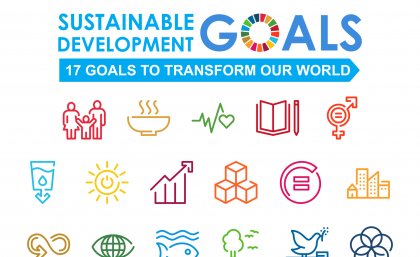
A team of scientists has warned that the UN Sustainable Development Goals (SDGs), designed to bring together environmental protection and socioeconomic development, are failing to protect biodiversity.
The University of Queensland’s Professor James Watson says as currently applied, the SDGs may actually serve as a smokescreen for further environmental destruction in the next decade.
“The SDGs were established as a blueprint for a more sustainable future for all, yet there are fundamental inadequacies in their ability to protect biodiversity,” Professor Watson said.
“If these errors are not corrected, the SDGs could unknowingly promote environmental destruction in the name of sustainable development.”
The SDGs are a framework of 17 goals, 169 targets and 247 indicators adopted by the UN General Assembly in 2015 to replace the expired Millennium Development Goals.
They were touted as a major improvement, in part because of the integration of the environment across the entire framework.
However, a study by researchers from UQ, National University of Singapore, The University of Melbourne and University of Northern British Colombia found a stark mismatch between the SDGs and real progress towards biodiversity conservation.
“We assessed each country’s performances on a prescribed set of indicators and compared these indicators against other independent and well-established measures of environmental protection,” Professor Watson said.
“We found that overall, only seven per cent of correlations between SDG indicators and external indicators of biodiversity and environmental protection were significantly positive.
“Alarmingly, 14 per cent of the associations are negative and the majority – or 78 per cent – are non-significant, strongly suggesting that many of them do not adequately reflect progress towards environmental conservation goals.
“For example, one particular SDG, the development of quality, reliable, sustainable and resilient infrastructure, cuts across all three pillars of development,” he said.
“But its indicators prioritise social and economic issues by focusing on rural population accessibility and passenger or freight volumes, without accounting for the harmful environmental impacts of such infrastructure development.”
The research also found with the growing rates of extreme climate events and threats associated with the expanding human population, discrepancy between these trends and the results from the proposed environment-related SDG indicators was clear.
“Over the past 50 years, threats to nature have accelerated globally, resulting in changes to more than 75 per cent of the Earth’s surface and population declines in more than one million species,” Professor Watson said.
“We are expecting these threats to worsen in the coming years; the SDGs need to prioritise environmental protection over socioeconomic development.”
The researchers want the indicators to be revised.
“In the 2030 agenda, a greater focus should be placed on data collection and quantification, both temporally and spatially, or the development of more reliable composite indicators within the existing framework,” Zeng Yiwen from the National University of Singapore said.
“While the SDGs have sparked a resurgence in the need to balance economic and social development with the protection of natural resources and biodiversity, the data collected so far does not reflect this balance.”
The team also wants greater funding and incentives to aid in the collection of data, especially among developing nations.
This study was published in Nature Sustainability (DOI: 10.1038/s41893-020-0555-0).
Media: Professor James Watson, jwatson@wcs.org; Julie Baglot, j.baglot@uq.edu.au.
.jpg)










